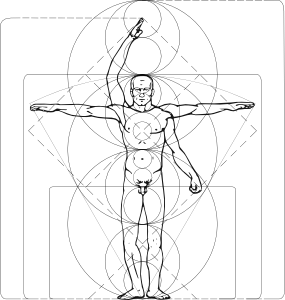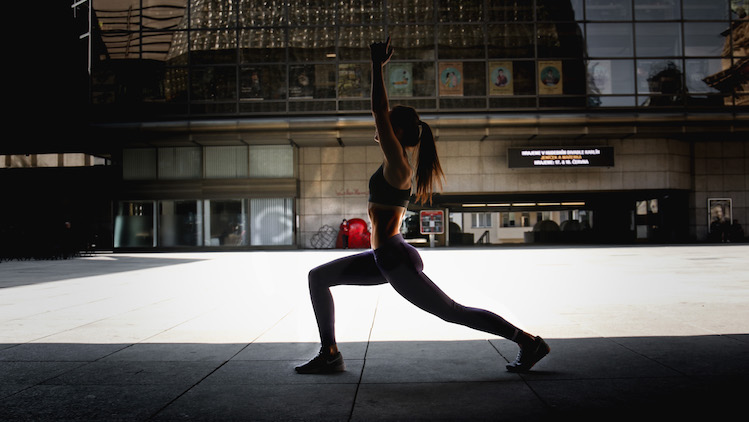Scientific Aspects of Yoga
 It is science, in modern conditions, that is an important factor determining the progressive transformations in any sphere of human activity, including yoga, as one of the most self-improving systems of human development in the methodological plan.
It is science, in modern conditions, that is an important factor determining the progressive transformations in any sphere of human activity, including yoga, as one of the most self-improving systems of human development in the methodological plan.
By a scientific approach, we will mean examining yoga in the aspect of the sciences that study the work of the human body and psyche in the most detail, such as: physiology (studies the structure and functioning of the physical body), biomechanics (studies the possibilities of optimizing the functioning of the musculoskeletal system), psychology (studies device and patterns of functioning of the psyche). However, it is worth noting that human capabilities are not thoroughly studied not only by these sciences, but by all the others combined. Indeed, until now, scientists are unanimous in the opinion that they have discovered only a negligible part of the true knowledge of the human being.
The physiological aspects of yoga contribute to a deeper understanding of the essence of the impact of hatha yoga exercises, first of all, as a therapeutic system and are prerequisites for building the scientific foundation of healing effects on humans.Consider, from the point of view of physiology, the basic mechanisms of the functioning of the human body as a result of the application of classical eight-step yoga (yama-niyama-asana-pranayama-pratyahara-dharana-dhiyana-samadhi).
From the natural sciences, yoga appears as a method of self-discipline. In the physiological sense, we are talking about a certain system of training in methods of conscious control and regulation of motor, sensory, autonomic and mental activity. In this case, a conscious effect on somatic and mental functions is carried out, which coincides with conscious “self-recognition”, “experience” of the function. The goal of yoga practice can be seen both in an intensive and accurate study of the inner world of a person, and in the implementation of practices and lifestyles that lead the body to a situational and constitutional optimum. In this sense, it would be legitimate to define yoga as a practiced individually and subjectively experienced “therapeutic physiology”.
The human body has about 200 segments of striated muscle, each of which is surrounded by a fascia that passes into the tendon and attaches to the bone. In addition, in the joints of the bones – joints, there are ligaments that form articular bags. Each such segment has receptors through which the central nervous system receives relevant information about the strength and nature of stimulation (excitation). The immediate localization of this irritation is the cerebral cortex.
Thus, by stimulating certain muscle groups, using the static and dynamic mode of training, as well as stretching and relaxing the muscles with the help of motor actions and asanas, an indirect effect on the central nervous system becomes possible. Stimulation of certain areas of the cerebral cortex affects the thought process and the feelings and emotions associated with it. Mental activity, in turn, affects both the skeletal and smooth muscle of the internal organs. In addition, certain body positions affect the endocrine system, which also manifests itself in the corresponding reactions of the body. The use of various means and methods of working with the musculoskeletal system allows you to achieve the necessary functional reactions and conditions of the human body, to perform or solve the corresponding tasks.
Physiology of Yoga Speaking the language of physiology, there is an impact on the functional state of the central nervous system, therefore, the regulation of the mental and physiological functions of the body. Due to this, subjective diagnostics by a person of his psychological and physical conditions can occur, as well as the introduction of appropriate programs for their correction. Such a process of self-knowledge allows us to bring a human being to a new stage of evolutionarily significant changes and, as a result, to a higher level of personality realization.
The first two steps of classical yoga (Yama and Niyama) are represented by the rules of behavior, which are unchanged in all schools of yoga. Moreover, they also became generally accepted moral precepts for all those who, although not engaged in yoga, live in the Indian cultural traditions of Hinduism, Buddhism, or Jainism, and, apparently, only the instructions for purification are not observed as strictly as in yoga . At first glance, it seems that Yama and Niyama are not directly related to physiology. However, in the sense of a holistic consideration of the eco-socio-psycho-somatic organization of life, some of these prescriptions have common ground with physiology. For purely medical fields of activity in which psychotherapeutic, psycho-hygienic, socio-medical or physiological dietary aspects are important, attractive prospects may lie here.




